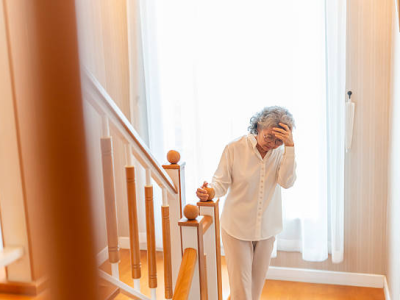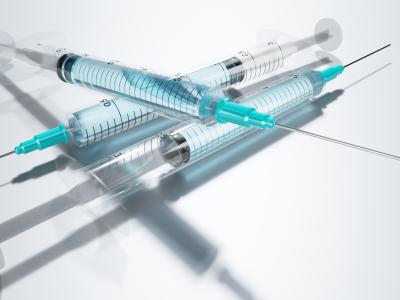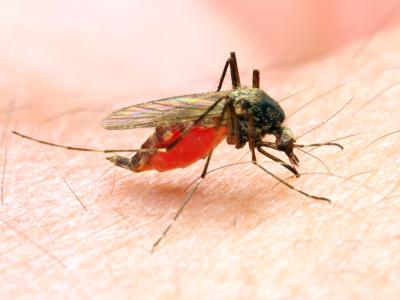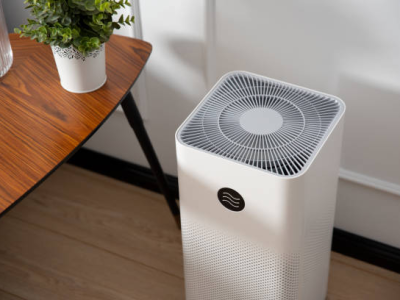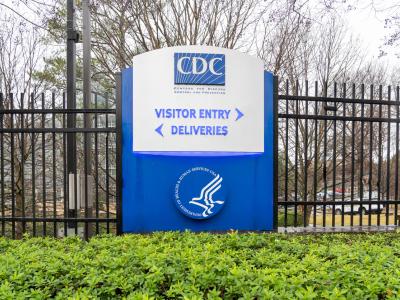Analysis of remdesivir COVID-19 trials posts encouraging results
In a comparative analysis published late last week in Clinical Infectious Diseases, the antiviral drug remdesivir was linked to significantly greater recovery and a 62% lower death rate by day 14 versus standard treatment in hospitalized adults with severe COVID-19.
Researchers used data from 298 participants in an ongoing phase 3 trial of remdesivir at 45 international sites, as well as retrospective data from an ongoing real-world longitudinal study of 816 patients given standard treatment at 16 international sites.
Patients in the remdesivir group were randomly assigned to receive standard treatment plus 200 milligrams (mg) of remdesivir on day 1, followed by either 4 or 8 days of 100 mg of remdesivir.
By day 14 of treatment, 74.4% of patients treated with remdesivir had recovered, compared with 59.0% in the standard-treatment group (adjusted odds ratio [aOR], 2.03; 95% confidence interval [CI], 1.34 to 3.08; P < 0.001).
Improved clinical status, indicated by an increase of at least 2 points on an ordinal scale or hospital release at day 14, was seen in 71.9% in the remdesivir group and 58.8% of the non-remdesivir group (aOR, 1.64; 95% CI, 1.10 to 2.43; P = 0.01). On weighted analysis, improvement of at least 1 point at day 14 was seen in 76.2% of remdesivir patients and 60.2% of standard-care patients (aOR, 2.04; 95% CI, 1.37 to 3.05; P < 0.001).
At day 14, 7.6% of remdesivir-treated patients had died, compared with 12.5% in the standard-care group (aOR, 0.38; 95% CI, 0.22 to 0.68; P = 0.001).
Greater recovery at day 14 was associated with younger age, female sex, less need for high-flow or invasively delivered oxygen, not having high blood pressure, and not receiving a biologic agent or the antimalarial drug hydroxychloroquine.
"Our results are highly encouraging since studies of other antiviral agents have shown limited benefit, lacked a comparator, or observed significant toxicity," the authors wrote.
The study was sponsored by remdesivir manufacturer Gilead Sciences, which received an emergency use authorization from the US Food and Drug Administration on May 1 for the treatment of COVID-19 patients.
Jul 24 Clin Infect Dis abstract
Study finds COVID-19 symptoms linger in 35% of outpatients
Interviews of COVID-19 patients with mild illness found that more than a third had symptoms that lasted for 2 to 3 weeks after testing positive, including 1 in 5 previously healthy adults, researchers reported late last week in the Center for Disease Control and Prevention's (CDC's) Morbidity and Mortality Weekly Report (MMWR).
Of 582 patients in 13 states who were contacted by the CDC COVID-19 Response Team, 292 patients responded. The interviews were conducted 14 to 21 days after the first positive test for SARS-CoV-2 (the virus that causes COVID-19) and included questions about baseline demographics, baseline chronic medical conditions, symptoms present at time of testing, and whether those symptoms had resolved and patients had returned to their usual state of health by the time of the interview. The median age of the 292 respondents was 42.5 years, and 53% reported one or more chronic medical conditions. The median interval from test to interview date was 16 days.
Among the 274 interviews with available data, 95 (35%) reported that they had not returned to normal health by the time of the interview. The proportion of those who had not returned to normal health differed by age groups: 26% of interviewees aged 18 to 34 years; 32% of those aged 35 to 49 years, and 47% of interviewees aged 50 and older. Among 180 persons with no or one chronic medical condition, 39 with two chronic medical conditions, and 44 with three or more chronic medical conditions, 28%, 46%, and 57%, respectively, reported not having returned to their usual state of health (P = 0.003). Among respondents aged 18 to 34 years with no chronic medical conditions, 19% (9 of 48) said they had not returned to their usual state of health.
The symptoms least likely to have resolved by the time of the interview were cough and fatigue.
"Nonhospitalized COVID-19 illness can result in prolonged illness and persistent symptoms, even in young adults and persons with no or few chronic underlying medical conditions," the study authors wrote. "Public health messaging should target populations that might not perceive COVID-19 illness as being severe or prolonged, including young adults and those without chronic underlying medical conditions."
Jul 24 CDC MMWR study
Most COVID-19 clinical studies produce poor-quality evidence, analysis finds
Less than one-third of clinical COVID-19 studies yielded evidence strong enough to potentially change clinical practice, an analysis of 1,551 studies published today in JAMA Internal Medicine found.
Researchers at Stanford University and Yale School of Medicine searched coronavirus studies registered on ClinicalTrials.gov from Mar 1, 2011 to May 19, 2020.
Of the 1,551 studies, only 451 (29.1%) could potentially yield Oxford Centre for Evidence-Based Medicine (OCEBM) 2011 level 2 results, the highest level of individual study evidence. And only 75 randomized controlled trials (RCTs) (11.3%) were placebo-controlled and blinded and had two or more study centers (60 had more than 100 participants, while 24 had more than 500).
Among the 1,551 studies, 911 (58.7%) were interventional (664 RCTs and 640 [41.3%] observational), and 1,180 (76.1%) involved a single center. Common primary and secondary outcomes included death (526 [33.9%]), ventilation requirement (413 [26.6%]), and treatment complications (359 [23.1%]).
Of the 664 RCTs, the most common primary outcomes were clinical course (323 [48.6%]), death (51 [7.7%]), and a composite endpoint that included death (42 [6.3%]).
Blinding (a requirement for OCEBM level 2 evidence) was reported in 364 RCTs, of which 195 (29.3%) were placebo-controlled, 238 (35.8%) had a planned enrollment of at least 100 participants, and 113 (17.0%) involved at least two study centers.
Of the 640 observational studies, 517 (80.8%) involved only a single center, while 123 (19.2%) had more than one center, 36 of which had at least 10 centers. Eighty-seven observational studies (13.6%) were prospective cohort studies that could yield level 2 evidence.
Noting that study enrollment could decline with a reduction in new global COVID-19 cases, the authors said that even before study results are known, most studies probably won't generate high-quality, clinically meaningful evidence when it is most urgently needed.
"Although a few large multicenter trials may generate high-quality evidence, the large proportion of studies with an expected low level of evidence is concerning," they wrote. "Rapid dissemination of studies with low-quality evidence studies can influence public opinion, government actions, and clinical practice in potentially harmful ways, especially with a rising tide of COVID-19 study dissemination via preprint or other strategies ahead of peer review."
Jul 27 JAMA Intern Med research letter
Giving direct COVID-19 patient care linked to higher infection risk, study shows
A COVID-19 surveillance program at a Texas healthcare system detected coronavirus infection in 3.9% of 2,787 asymptomatic healthcare workers (HCWs) from Mar 11 to Apr 19, according to analysis of a convenience sample published today in JAMA Network Open.
Of clinical HCWs assigned to COVID-19 units at Houston Methodist's seven hospitals, 5.4% (95% CI, 4.5% to 6.5%) tested positive, versus 0.6% (95% CI, 0.2% to 1.7%) in non-COVID units (aOR, 9.10; 95% CI, 3.33 to 24.82) and 0% of nonclinical HCWs and 85 asymptomatic community residents (P < .001).
Of 1,992 HCWs in COVID-19 units, 3.6% (95% CI, 1.3% to 9.1%) of support staff, 6.5% (95% CI, 3.9% to 10.7%) of allied health staff, and 6.5% (95% CI, 3.6% to 11.3%) of administrative staff tested positive.
After adjusting for age, sex, and job category, two hospitals had significantly higher odds of COVID-19 infection in clinical HCWs and those working in the academic medical setting (aOR, 2.78; 95% CI, 1.76 to 4.39 and aOR, 2.49; 95% CI, 1.23 to 5.02), while the infection rate was substantially lower in another hospital (aOR, 0.34; 95% CI, 0.12 to 0.95).
The authors said that the 4.8% difference in infection rates between HCWs who provided care to COVID-19 patients and those who didn't could indicate transmission from patients or colleagues. Nonclinical HCWs worked in buildings with separate entrances and heating, ventilation, and cooling systems and fewer people because of work-from-home policies.
The work roles of HCWs in COVID-19 units, and thus their different presumed levels of exposure, didn't appear to affect infection rates, confirming the need for universal infection-control measures throughout coronavirus care units, the authors noted.
"Higher infection rates among COVID-19–facing clinical HCWs and interhospital differences highlight the need for surveillance, isolation, and consistent infection control throughout an organization," they wrote. "Ongoing HCW surveillance is imperative to restore clinical operations."
Jul 27 JAMA Netw Open research letter
